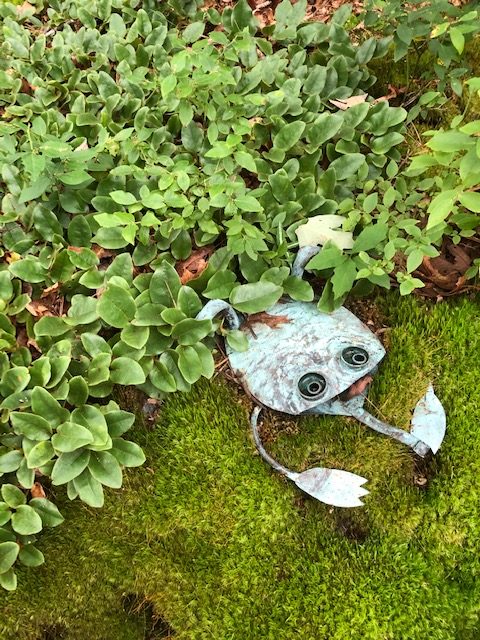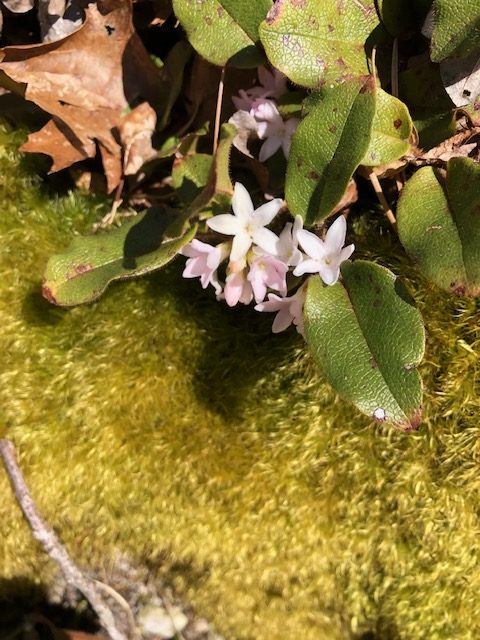“Autumn stays the marching year one moment,” said Edna St. Vincent Millay, and it is a time to “compute, refute, amass, catalogue, question, contemplate and see.”
I’m all in. Autumn days spent closely observing and evaluating the plants in my garden led me to a new appreciation for a native plant that plays Mozart, but doesn’t flaunt it. Understated, it adds value with quiet beauty, multi-season interest, longevity — and even historical significance:
Epigaea repens (Mayflower; Trailing Arbutus) Z 4-9
This Eastern North American native has trailing, thin, woody stems covered with thick, green leaves. Found in pine and oak shaded woodlands in well-drained, moist, acidic soil, Epigaea grows into a dense, evergreen, mat-like groundcover. (As shown in the photo above, in my garden the advancing foliage is about to overtake one very concerned fella.) The plant does not like to be disturbed — successful transplanting is all but impossible. If you are fortunate to have it, admire it in place.
In early April, Epigaea’s sweetly fragrant, wax-like, pink and white flowers appear amid its rusty, weather-worn foliage.
In her book, The Fragrant Path (1932), Louise Beebe Wilder wrote that it was one of “the earliest and perhaps the most beloved of our wild flowers.” Perhaps it was too beloved. The plants’ survival was threatened by unchecked collecting. The flowers were in great demand.
Mrs. William Starr Dana — author of the very popular guide How to Know the Wild Flowers (1908) — recalled taking a walk in the forest and finding trailing arbutus: “I denied myself the pleasure of picking more than one or two sprays of these flowers” she said, “singularly tempting though they were, so fearful am I of the extermination of this plant, the especial pride, perhaps, of our spring woods, and the peculiar object of the cupidity of ruthless flower pickers.” Dana, According To Season (1924).
Hmm. Makes one wonder. Apart from the “ruthless flower pickers”, how many Epigaea fans exercised restraint and plucked only one or two sprays? It adds up, doesn’t it?
In 1918, the Mayflower (Epigaea repens) was officially adopted as the Massachusetts State Flower. In 1925, the Massachusetts State Legislature placed the plant on the endangered list and prohibited wild harvesting. Violators paid a $50 fine. (The fine was doubled if the perpetrator was “in disguise” or did it “secretly in the nighttime.” Shades of Agatha Christie!)
It is believed that the Pilgrims named the plant Mayflower — same name as the ship that brought them to Massachusetts in 1620 — because it was the first Spring flower they saw, a hopeful sign after an arduous trip at sea and a hard winter on land. In 1856, John Greenleaf Whittier wrote about it in his poem The Mayflowers. In part:
‘God be praised’ the Pilgrim said,
Who saw the blossoms peer
Above the brown leaves, dry and dead,
‘Behold our Mayflower here!’
As we fast approach Thanksgiving, it might be interesting for children to learn about this connection between early American history and native plants in our gardens.
Be well, stay safe. And vote!!!

